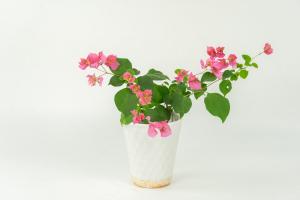Can I Notch a Rubber Tree Plant?
Notching is a common practice among plant enthusiasts, especially for those who want to encourage the growth of new lateral shoots. The idea behind notching is to create a stress point in the plant, which triggers the production of new shoots or roots. However, when it comes to rubber tree plants, the question is: can you notch this plant without causing harm?
The Basics of Rubber Tree Plants
Rubber tree plants are native to Southeast Asia, and they are known for their ability to produce latex, a valuable material used in the production of rubber. In the wild, rubber tree plants can grow up to 100 feet tall, but as a houseplant, they usually reach a height of 6 to 10 feet.
Rubber tree plants have big, shiny, oval-shaped leaves, which can be green or variegated depending on the cultivar. The leaves can grow up to a foot long and wide, and they are supported by woody stems that can get quite thick with age. Rubber tree plants are relatively easy to care for, and they can thrive in a wide range of indoor lighting conditions.
The Science of Notching
Before we get into whether or not you can notch a rubber tree plant, let's talk a bit more about how notching works. When a plant experiences stress, it produces plant hormones called auxins, which are responsible for promoting the growth of new shoots and roots. By creating a stress point on the plant, you can trigger the production of auxins and encourage the plant to grow in a specific way.
Notching is just one way of creating a stress point on a plant. Other methods include bending, pruning, and even singing to your plants. The effectiveness of notching depends on the plant species, the location of the notch, and the timing of the procedure. Some plants respond well to notching, while others may be harmed by it.
Can You Notch a Rubber Tree Plant?
So, back to our original question: can you notch a rubber tree plant? The answer is yes, you can, but you need to proceed with caution. Rubber tree plants are somewhat sensitive to stress, and notching can cause the plant to lose leaves or even die if done incorrectly.
If you want to notch your rubber tree plant, the best time to do it is in the spring or early summer when the plant is actively growing. Choose a spot on the stem that is at least 1/4 inch wide and make a shallow notch about 1/4 inch deep. You can use a sharp knife, scissors, or even a razor blade to make the cut, but be sure to disinfect your cutting tool first to prevent the spread of disease.
After making the notch, dust it with some rooting hormone powder and wrap the stem with some moist sphagnum moss. Cover the moss with some plastic wrap or aluminum foil, making sure that the wrap is airtight but not too tight. This will create a humid environment around the notch, which will encourage the plant to produce new roots or shoots.
Caring for Your Notched Rubber Tree Plant
After notching your rubber tree plant, be sure to keep an eye on it to make sure that it doesn't lose too many leaves or become too stressed. Keep the moss around the notch moist but not too wet, and avoid fertilizing the plant too much while it is recovering.
If all goes well, you should start to see new growth around the notch within a few weeks to a few months. Once the new shoots or roots have grown enough, you can remove the moss and the plastic wrap and allow the plant to grow normally.
Conclusion
Notching can be a great way to encourage new growth in your rubber tree plant, but it is important to proceed with caution. Remember to choose the right spot, disinfect your cutting tool, and create a humid environment around the notch to promote new growth. With a little bit of patience and care, you can notch your rubber tree plant without causing harm and enjoy the beauty of new growth.

 how many times do yo...
how many times do yo... how many planted tre...
how many planted tre... how many pine trees ...
how many pine trees ... how many pecan trees...
how many pecan trees... how many plants comp...
how many plants comp... how many plants can ...
how many plants can ... how many plants and ...
how many plants and ... how many pepper plan...
how many pepper plan...































